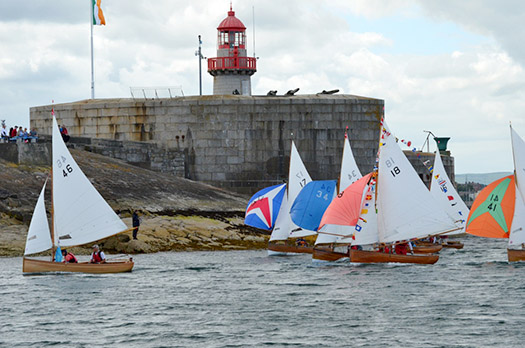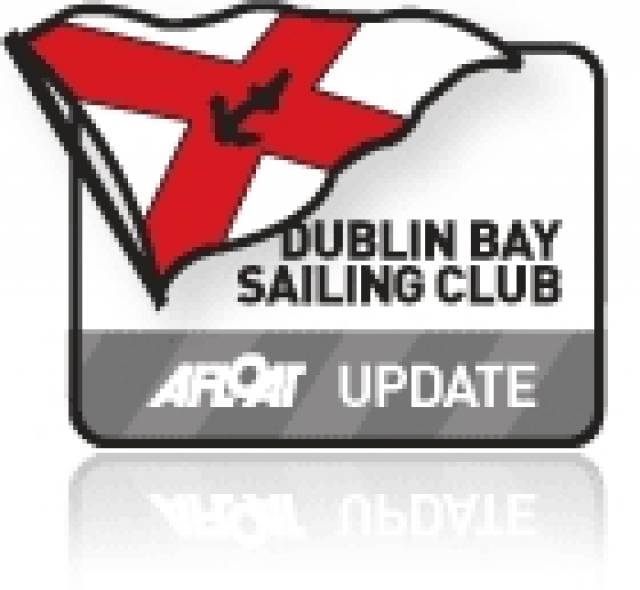#waterwag – Dublin Bay Sailing Club doyen Carmel Winkelmann officiated at the launch of the newest Water Wag dinghy, Mademoiselle, No. 46 on Sunday at the Royal Irish Yacht Club.
The new 12–foot clinker dinghy was built for Bay sailors Adam Winkelmann and Doug Smith. The boat was built in Skol Ar Mor, France.
The Water Wag is the oldest one design dinghy in existence, having been devised in 1886 and formalised as a one design class in Ireland in 1887. The design (last modified in 1900) is still sailed to this day on Dublin Bay and is one of the most popular dinghies sailed on the capital's waters recording some notable turnouts of late.
Immediately after the champagne launch ceremony, the Water Wag class held its annual picnic race (which has been running since 1887) with a pursuit down to Dalkey Island and back. An exciting race down to the Island with the end of the ebb tide. Mademoiselle led for most of the way but Mollie managed to overtake her coming into Dalkey sound, with David McFarland in third.
On the return home, No 1 Ethna sailed by Bill Nolan and Niamh Hooper led out of Dalkey sound, Moosmie had to go back as she was over the line but came steaming up the inside to take the win with Ethna 2nd and Mollie 3rd so taking the overall win!
The class thanks 'Thyme Out' and the Bretzel Bakery for sponsoring the fabulous lunch on Dalkey Island. Also our thanks to Brian and Anne Craig and Michael O'Leary for acting as mother ships, Dara, Caoimhe and Eddie Totterdell who had just got in from Greece at 4 in the morning from holidays and made it out drive a rib for us, also to Sandy Aplin who did a sterling job of ferrying us in an out of the Island.

Mademoiselle (above and below) led the Wags on their annual picnic race to Dalkey Island after her launch. Photos Owen McNally


The Wags moor up off Dalkey Island (above) and go ashore for a picnic Photos Owen McNally

Results;
1st Moosmie
2nd Mollie
3rd Mademoiselle
4th Ethna
5th Skee
6th Barbara
7th Coquette
8th Good Hope
9th Chloe

























